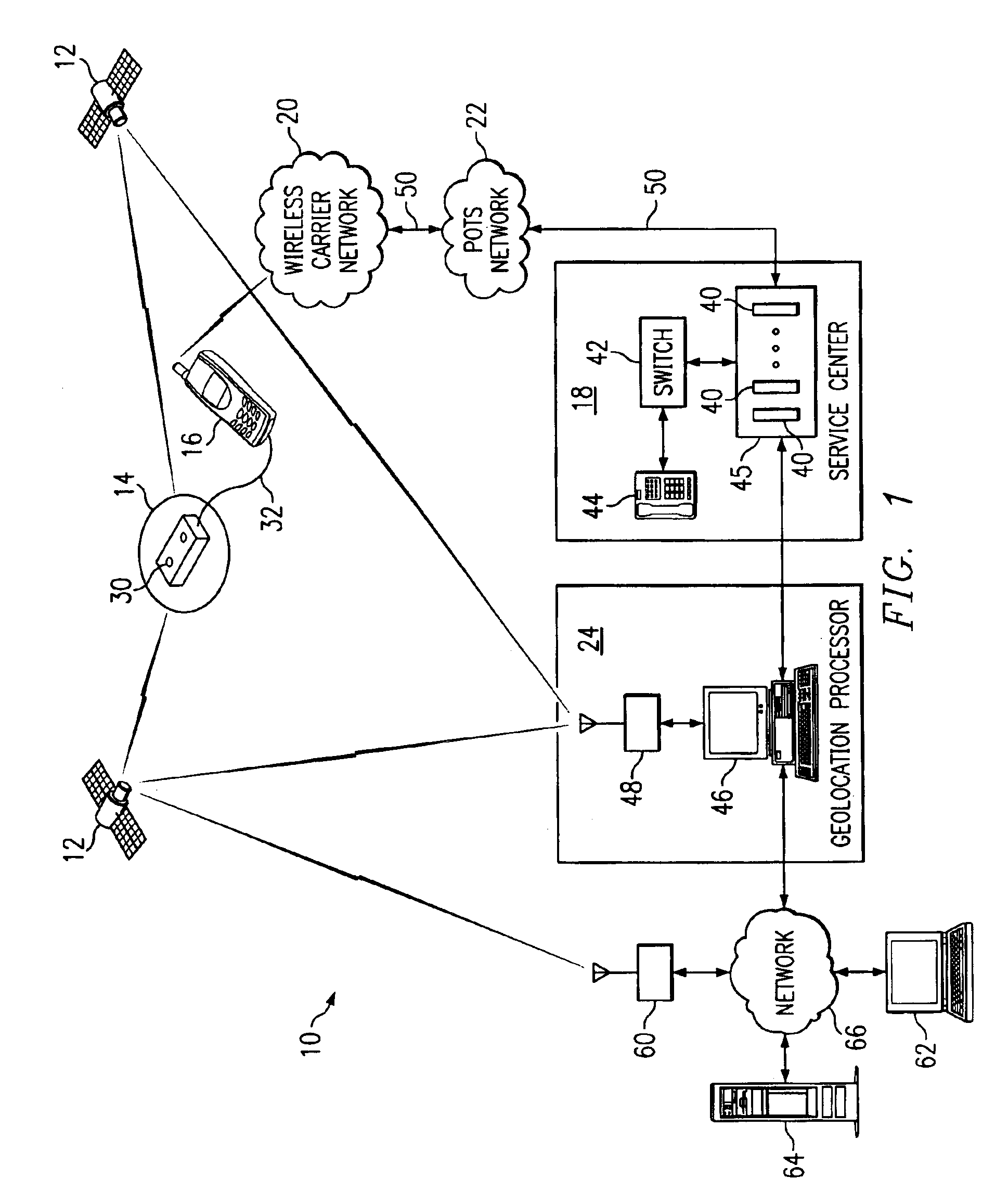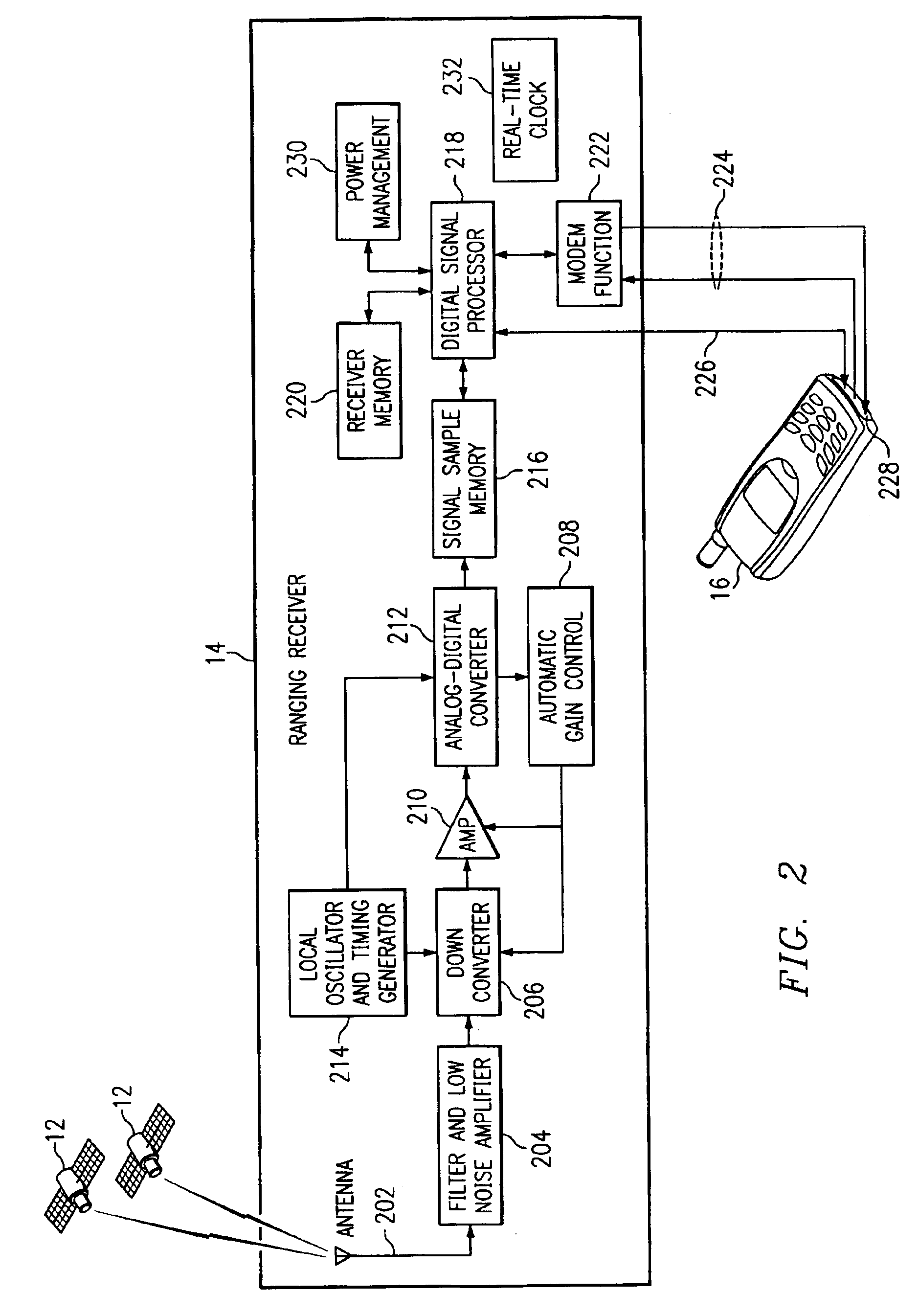Method and system for processing positioning signals in a stand-alone mode
a positioning signal and standalone technology, applied in the field of geolocation, can solve the problems of increasing the weakened satellite signal, the relatively expensive requirement of the integration of the network of such receivers, etc., and achieve the effects of minimizing the time to estimate the pseudorange of received positioning signals, reducing disadvantages and problems, and maximizing processing gains
- Summary
- Abstract
- Description
- Claims
- Application Information
AI Technical Summary
Benefits of technology
Problems solved by technology
Method used
Image
Examples
Embodiment Construction
[0033]FIG. 1 is a block diagram illustrating a remote geolocation system 10 in accordance with one embodiment of the present invention. The system 10 may comprise a global positioning system (GPS), a global navigation satellite system (GLONASS), or other suitable navigation system.
[0034]In the case of GPS, satellites in a navigation constellation all transmit on the same 1575.42 MHz frequency and use a code division multiple access (CDMA) technique to distinguish one satellite's signal from the others. In the case of the GPS constellation, a 1023-chip Gold code is biphase-modulated on the sinusoidal carrier. The Gold codes, unique to each satellite, are used for the CDMA and ranging functions. The chipping rate in this case is 1023 kHz, so that the transmission of the Gold Code repeats every millisecond. One cycle through the Gold Code is called a “code epoch.” A set of samples whose duration is equal to the duration of a code epoch is referred to herein as an epoch. Navigation mess...
PUM
 Login to View More
Login to View More Abstract
Description
Claims
Application Information
 Login to View More
Login to View More - R&D
- Intellectual Property
- Life Sciences
- Materials
- Tech Scout
- Unparalleled Data Quality
- Higher Quality Content
- 60% Fewer Hallucinations
Browse by: Latest US Patents, China's latest patents, Technical Efficacy Thesaurus, Application Domain, Technology Topic, Popular Technical Reports.
© 2025 PatSnap. All rights reserved.Legal|Privacy policy|Modern Slavery Act Transparency Statement|Sitemap|About US| Contact US: help@patsnap.com



